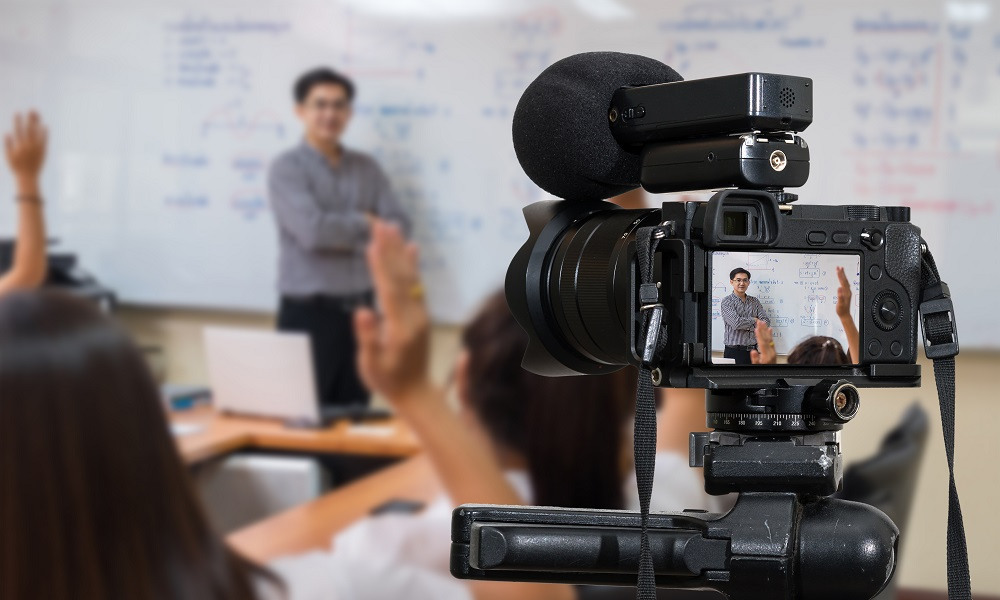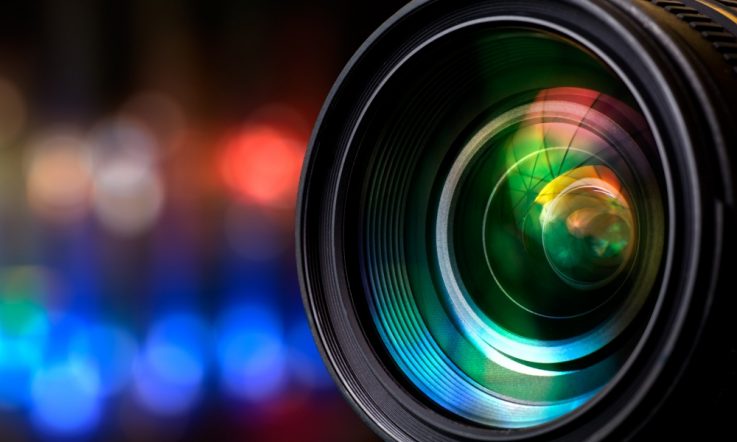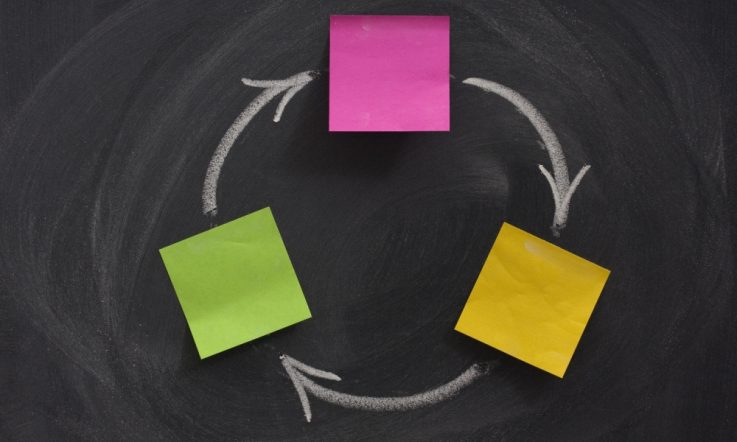For Marco Cimino, the decision to begin filming sections of his lessons was borne from his desire to ensure absent students could catch up on lessons they'd missed. Since he got started, he's found it also allows him to reflect on his own practice as an educator.
‘It's a really reflective process where I can sort of see how long I talk for as opposed to how long the students talk for and how long I pause for in terms of giving them a chance to answer questions, or to think,' the HSIE (Human Society and Its Environment), VET and RE teacher says.
Cimino says he is very discerning in the lessons he records. He teaches at Magdalene Catholic College in New South Wales where each lesson runs for 75 minutes; but he will typically film 20-30 minutes in a lesson when a content heavy, teacher-led discussion is taking place.
Accessible filming equipment
Cimino's set up is simple – an iPad mounted to a short tripod placed on a desk at the back of the classroom.
‘So the iPad actually sits above the heads of every student, so all you can see in the entire video is just the board and myself,' he explains. The positioning of the iPad also accounts for the instances when a student stands up to walk around during the lesson to ensure they're still not caught on film.
By having the iPad in this position at the back of the classroom, Cimino says he needs to ensure he is using a model of iPad that has a high quality camera to pick up everything he is teaching.
And, occasionally, he enlists the help of a student to let him know how much of the whiteboard is in frame to make sure he's not writing notes that will end up being cut off by the camera in the final video.
‘I've needed to sort of re-evaluate how big I'm writing and how thick I'm writing on the board, because if it's too small it's going to get really blurry and really hard to see, so that's one of the hurdles.
‘That's what comes off with that self-reflection process of looking at thinking, “well I can't really see what's on the board there, so next time I do it I need to readjust how I write”, for example.'
Because Cimino is uploading his videos to YouTube, he spends some time editing footage of the lessons after he's watched them in full.
‘So if it's a 30 minute video that I'm editing, you've got to put in about 30 minutes of watching it, and then maybe another 30 minutes of editing. So, all in, it only takes about an hour to do,' he says, explaining that editing usually involves cutting out some of the footage and adding titles to certain sections.
Permission considerations
The legal requirements for filming will differ between locations and school sectors across the country, so having an initial conversation with your principal or line manager is usually the best way to get started.
A conversation with his principal to discuss the idea of filming his lessons was the first step Cimino took to work out which permissions he'd require and what he might need to look out for. Not having any student identifiable in Cimino's videos is important because he uploads the clips to YouTube.
With the principal, he came to the conclusion that he would need to ensure that his videos didn't have anything that would identify a student. So, if the iPad picks up a conversation a student is having during the lesson where they divulge any personal information, like their full name, or possibly something they did on the weekend which reveals a specific location, Cimino edits this out.
Overcoming the novelty of filming
Whether you're filming for your own professional development or to create a resource for students, students in your class are going to be aware that you're filming the lesson and that may trigger some changes in their behaviour.
Cimino says the initial novelty of having a lesson filmed was something he needed to overcome with his students.
‘[It was] the elephant in the room, where the kids see this iPad and you ask questions like, “who knows the answer to this?” and no one will talk because they're too scared to speak because it was getting recorded,' he says. ‘So that was the biggest hurdle, sort of creating that culture in the class of “it's okay, we can still have discussions”.'
It's important to start small when you begin filming your lessons, Cimino says. He explains that educators shouldn't feel like they need to film every single lesson possible because that just isn't necessary. He also suggests starting by filming a small segment of your lesson – for example, a five to 10 minute clip of you talking to your class.
‘Don't feel that, “oh, if I film myself I don't want to, sort of, make a fool of myself”. No one has to see it,' he says. ‘I put mine on YouTube but I've got no issues with myself being put out there … you can just use it as your own personal, reflective practice.'
If you regularly film your teaching, what tips would you offer educators looking to get started? How has it helped to improve your practice?
If you’re hesitating to begin filming yourself teaching, what concerns are holding you back?



